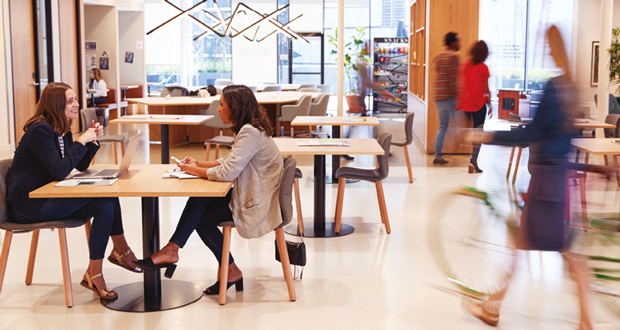The COVID-19 pandemic has had a seismic effect on office design and usage, according to the latest report in PlanRadar’s ‘Architecture of the Future’ series: ‘The Offices of the Future’. The research, which provides a snapshot of the global office specification and commercial fit-out sector, shows a paradigm shift in workplace perceptions since the pandemic, which have ushered in a sea change in approaches to office layout and design.
The single, dominant change, registered across almost all 12 territories covered (excluding the US) is a stagnation, and in some cases contraction in office size. Most are expecting the workspace to remain at pre-pandemic size or shrink (80 per cent) due to an increasingly remote, multi-location workforce.
Employees globally are exhibiting an evolving preference for a more flexible, part-time approach to in-office attendance, indicating a definitive end to the age of ‘presenteeism’ as an indicator of productivity.
Workers now expected to schedule allocated days in a phased approach. Almost 40 per cent in the UK now work remotely and over a fifth in the majority of other countries analysed. All predicted this trend to strengthen, except Spain which, anomalously, believed there would be a decline in remote working.
This more elastic attitude towards the traditional office has been complemented by an explosion in the number of co-working spaces now available internationally. Although these assets were increasing before the pandemic, the amount has rocketed over the last couple of years, with the UK now hosting over 6,000 of them.
Interestingly, co-working spaces are particularly on the rise in suburban and rural areas, reflecting the mass urban exodus of many professionals during the Pandemic.
The ‘Office of the Future report’ also reveals that the fundamental purpose of the office is also changing and is in fact undergoing a radical transformation. What’s clear is these venues are no longer the consistent destination for the working week.
Now, it has become a location for specific, predominantly social, collaborative activities, fostering team culture or for face-to-face client meetings. This is emphasised by an increasing preference for collaborative, open-plan environments, which are better suited for group work and team activities.
Additionally, the report also highlighted a number of emerging design trends. In most countries, there’s a growing interest in flexible spaces. This includes, but is not limited to, moveable partitions, modular meeting pods and lightweight furniture which enable the workplace layout to flex with agility to fluctuating staff levels and business requirements.
Designing for sustainability and wellbeing was also regarded as a priority in the majority of countries covered, specifying for hygiene and eco-friendliness against the backdrop of the post-COVID working world and Net Zero 2050 targets.
Many reported increasing demands for bacteria-resistant elements such as non-porous surfacing and better ventilation as well as biophilic features and low-carbon interiors as a growing requirement in the design brief.
Commenting on the report, Ibrahim Imam, Co-CEO of PlanRadar says, “Whilst the world was tentatively moving towards a more hybrid or fully-remote model in 2019, the Pandemic acted as the catalyst to transform both employer and employee attitudes towards the physical workspace. Now these assets are less regarded as places to show up at day-to-day and have changed purpose, becoming locations where ideas are shared and developed in a collaborative environment. We´re seeing the development of a more flexible and productive professional landscape.”
The full The Office of the Future report can be accessed here.





